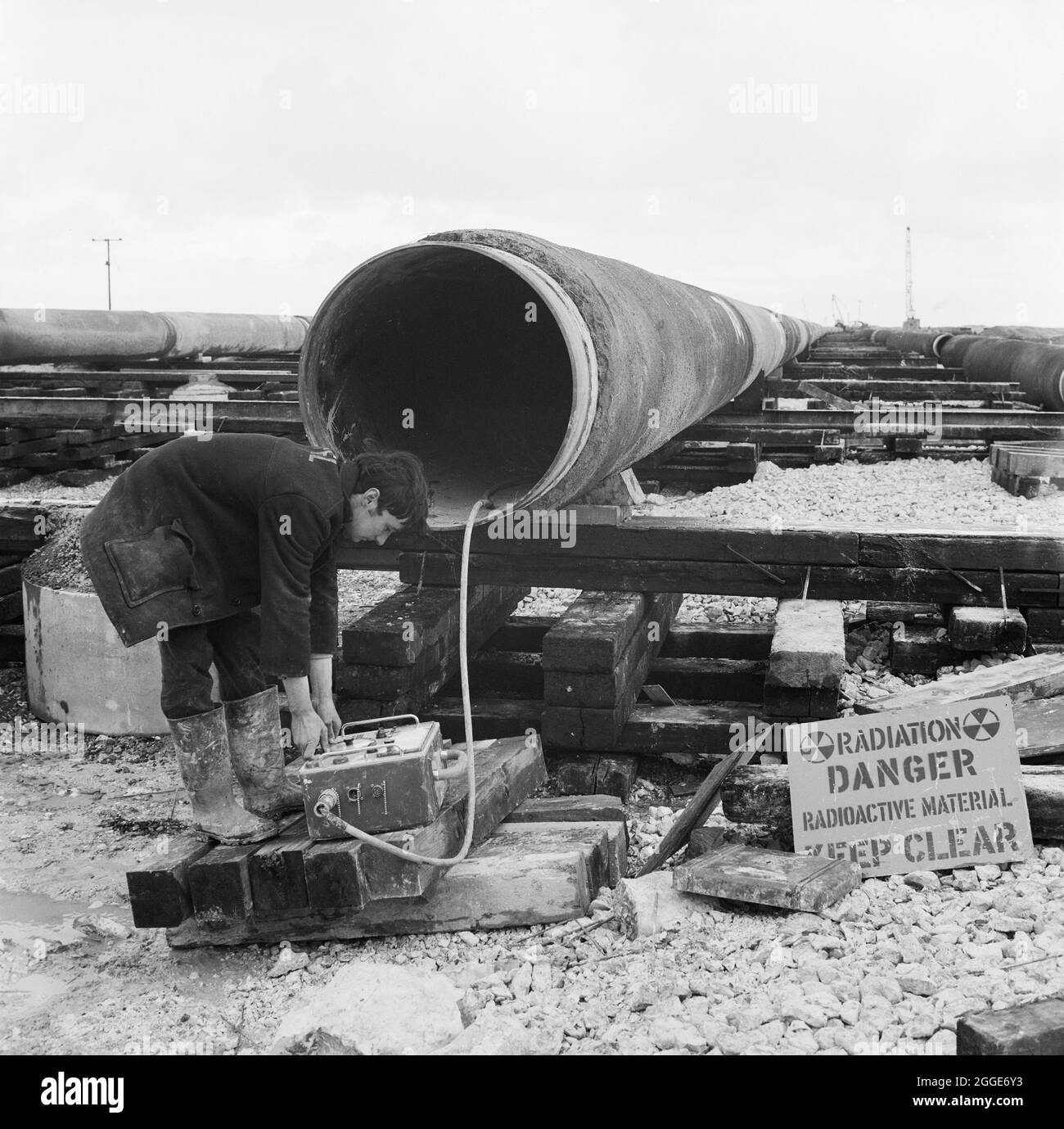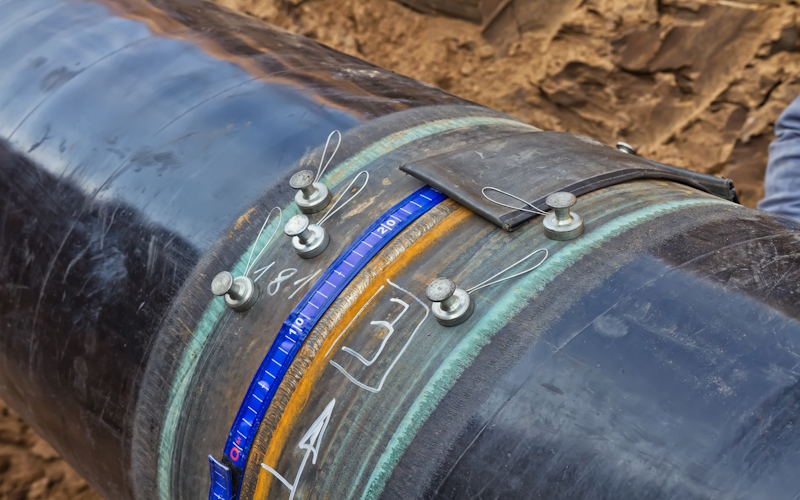Comprehensive Pipeline Welding Inspection: Protecting Framework Stability
Comprehensive Pipeline Welding Inspection: Protecting Framework Stability
Blog Article
Comprehending the Principles of Pipeline Welding Assessment: Critical Aspects for Reviewing Weld High Quality and Stopping Failings
In the realm of pipe welding examination, the risks are without a doubt high, necessitating a complete understanding of basic concepts to guarantee weld high quality and reduce failing threats. Different essential variables come right into play, including the selection of ideal products, the application of advanced evaluation strategies, and the acknowledgment of widespread welding issues.
Significance of Weld Top Quality
The integrity of a pipe is basically reliant on the high quality of its welds, making weld top quality a critical factor in guaranteeing effective and secure operation. A pipeline weld works as a joint factor where materials are joined, and any type of shortages around can lead to significant architectural weaknesses. Poor weld quality can result in leakages, tears, and disastrous failures, posing significant safety and security dangers and environmental threats.
Several elements contribute to the quality of a weld, consisting of the selection of welding procedure, the skills of the welder, and the problems under which the welding is executed - Pipeline Welding Inspection. Inadequate preparation, inappropriate heat input, and contamination can jeopardize weld honesty, leading to problems such as porosity, incomplete combination, or fractures. Therefore, rigorous quality assurance measures need to be implemented throughout the welding procedure to minimize these threats
Furthermore, the long-lasting efficiency of a pipe is greatly influenced by the toughness of its welds. High-grade welds not only improve the total stamina of the pipeline yet likewise extend its solution life, reducing the demand for expensive repairs and downtime. Therefore, making sure premium weld high quality is extremely important in pipe style and upkeep techniques.
Secret Assessment Strategies
Guaranteeing weld top quality demands the application of efficient examination methods to identify potential imperfections prior to they lead to failings. Pipeline Welding Inspection. Amongst the most commonly utilized approaches are visual inspection, radiographic testing (RT), ultrasonic testing (UT), and magnetic fragment screening (MT) Each strategy serves a distinctive function and is chosen based upon the details demands of the pipeline project
Aesthetic evaluation is the first line of defense, permitting examiners to assess surface conditions, placement, and total craftsmanship. Radiographic testing offers a thorough sight of inner weld integrity by making use of X-rays or gamma rays to detect subsurface imperfections.
Ultrasonic testing uses high-frequency sound waves to assess the thickness and honesty of welds, making it optimal for spotting internal discontinuities. Magnetic fragment testing is a dependable approach for identifying surface area and near-surface defects on ferromagnetic products by using magnetic fields and fine ferrous fragments. By utilizing these key evaluation methods, pipeline welding assessors can guarantee the best quality requirements are preserved, ultimately resulting in more secure and a lot more reliable pipe systems.
Usual Welding Defects
Among the most prevalent flaws are porosity, which takes place when gas entraps in the weld metal, creating spaces that deteriorate the joint. One more substantial problem is lack of blend, where the weld steel does not appropriately bond with the base material, jeopardizing the joint's strength.

Splits are likewise an essential problem, materializing in numerous forms such as hot fractures, cool fractures, and root cracks. Each kind presents distinct challenges and calls for particular inspection methods for discovery. Undercut is one more flaw that can decrease the weld's cross-sectional location, causing stress concentration points, while slag addition happens when non-metallic product comes to be caught in the weld swimming pool, negatively affecting the mechanical buildings of the weld.
Furthermore, incorrect bead shape can result in uneven stress distribution. Acknowledging these typical defects is vital for welders and assessors alike, as very early discovery and adjustment are crucial to making sure the long life and integrity of pipe systems.

Materials and Their Influence
Picking the ideal products for pipeline welding significantly influences the overall performance and reliability of the welded joints. The choice of base metals, filler materials, and coatings plays an essential role in determining the strength, rust resistance, and resilience of the welds. For instance, carbon steel is commonly utilized for its balance of strength and price, yet it might be susceptible to corrosion in like this certain settings, demanding using corrosion-resistant alloys or protective finishes.
Furthermore, dissimilar steel welding requires careful factor to consider of thermal expansion residential or commercial properties and potential galvanic deterioration. The compatibility of materials can considerably affect the microstructure of the weld, causing variations in mechanical residential properties. For instance, stainless steel offers superb deterioration resistance however might call for specific filler products to ensure a sound weld joint.
Furthermore, the influence of temperature and environmental problems on material option can not be undervalued. High-strength steels may lose ductility at raised temperatures, while low-temperature applications might require materials with improved toughness. Eventually, understanding the implications of material choices is necessary for achieving ideal weld top quality and protecting against failures in pipe systems.

Regulative Standards and Conformity
Governing requirements and compliance play an essential function in pipeline welding, establishing the framework within which risk-free and efficient methods are preserved. These criteria are developed by different companies, consisting of the American Culture of Mechanical Designers (ASME), the American Welding Society (AWS), and the Pipe and Hazardous Materials Security Administration (PHMSA) Adhering to these policies makes certain that welding treatments meet the needed high quality and safety criteria.
Conformity with governing criteria is essential not just for ensuring the integrity of the welds but additionally for protecting the atmosphere visit site and public security. Examiners are charged with verifying that welding procedures adhere to these criteria via rigorous exams of both the procedures and the last welds. This entails examining welder qualifications, welding procedures, and the materials made use of.
Failure to abide by established regulations can bring about considerable effects, including pricey repairs, legal obligations, and tragic failures. Therefore, organizations need to integrate conformity into their operational methods, cultivating a culture of safety and security and high quality. Normal training and audits are important parts in keeping adherence to these regulatory standards, making sure that all workers are well-informed and furnished to promote the highest possible degrees of pipe welding top quality.
Verdict
In conclusion, an extensive understanding of pipe welding evaluation is crucial for making certain weld quality and protecting against failings. By utilizing vital examination methods and acknowledging typical welding flaws, assessors can successfully analyze the integrity of welds. Consideration of product choice and adherence to regulatory requirements additionally boost the reliability and security of pipeline systems. Eventually, these techniques add to the prevention of leakages and devastating failings, emphasizing the essential importance of strenuous evaluation procedures in pipeline building and construction and maintenance.
In the realm of pipe welding inspection, the stakes are unquestionably high, necessitating an extensive understanding of essential principles to ensure weld quality and reduce failure risks (Pipeline Welding Inspection).The honesty of a pipe is basically reliant on the high quality of its welds, making weld top quality a critical variable in making sure risk-free and efficient procedure.Numerous variables contribute to the high quality of a weld, consisting of the option of welding process, the skills of the welder, and the problems under which the welding is carried out. Undercut is an additional defect that can minimize best site the weld's cross-sectional area, leading to tension focus points, while slag inclusion takes place when non-metallic material becomes trapped in the weld pool, detrimentally impacting the mechanical properties of the weld
In final thought, an extensive understanding of pipeline welding assessment is vital for ensuring weld high quality and preventing failures.
Report this page